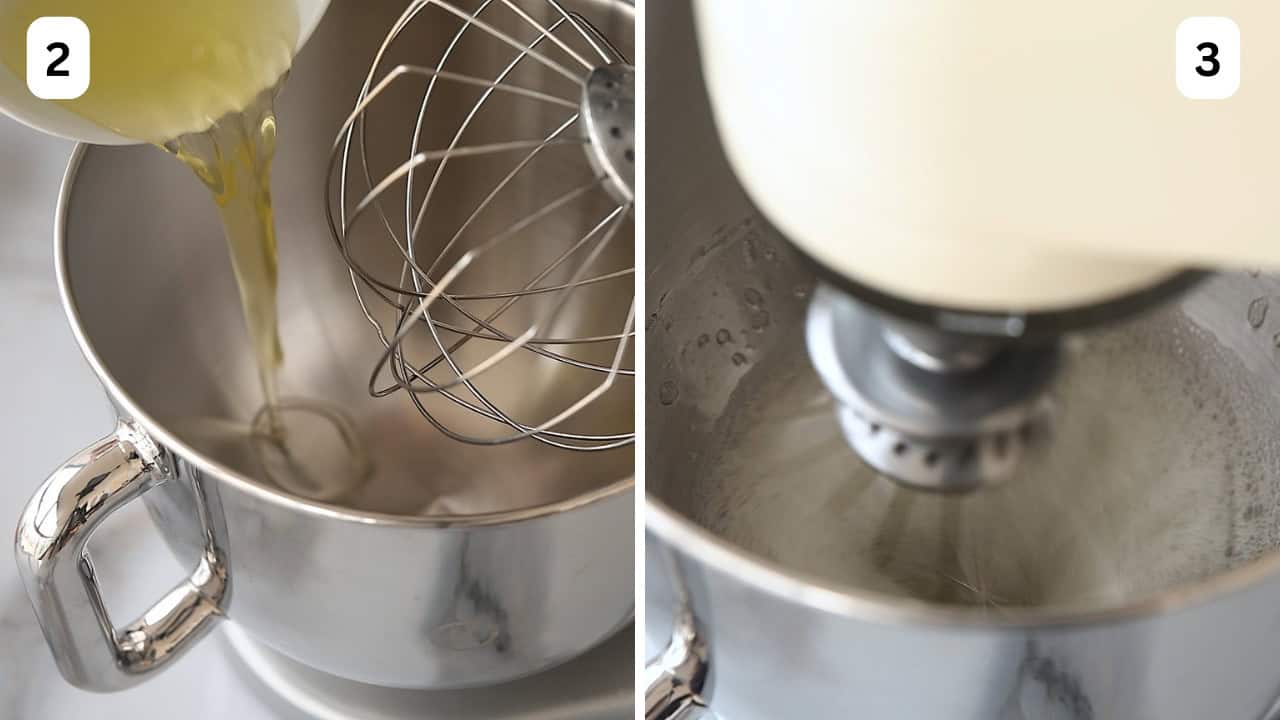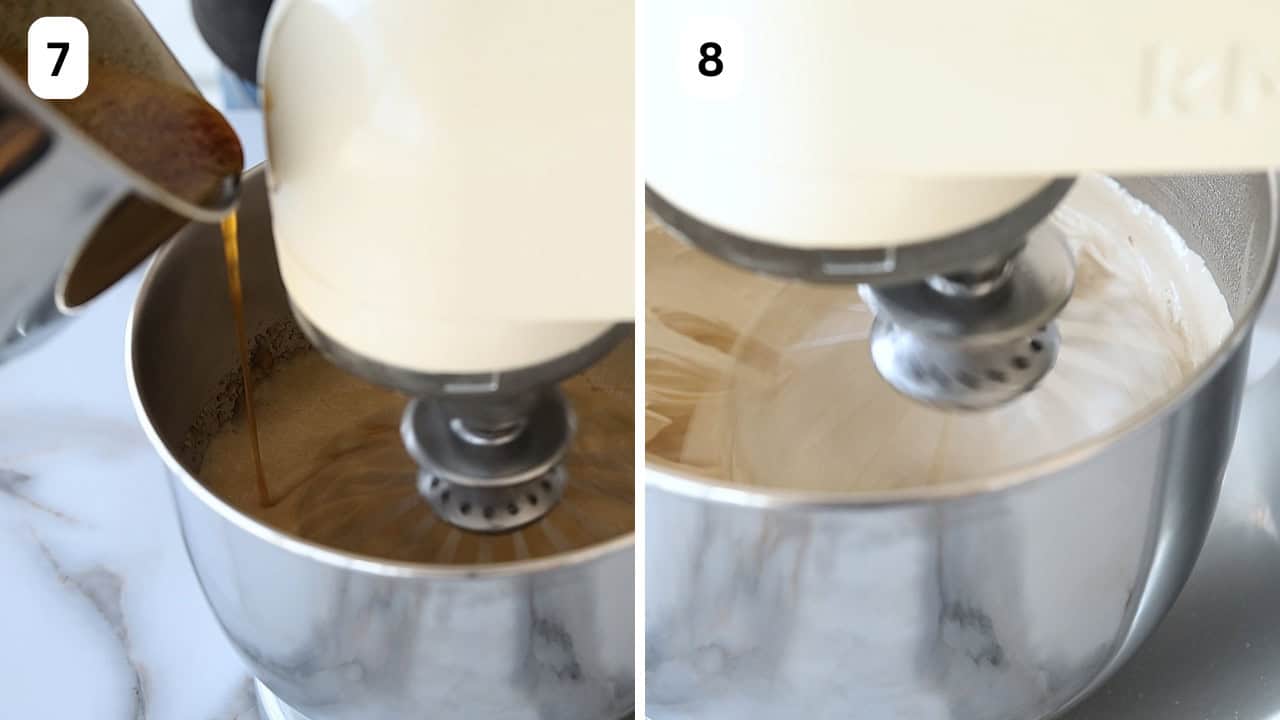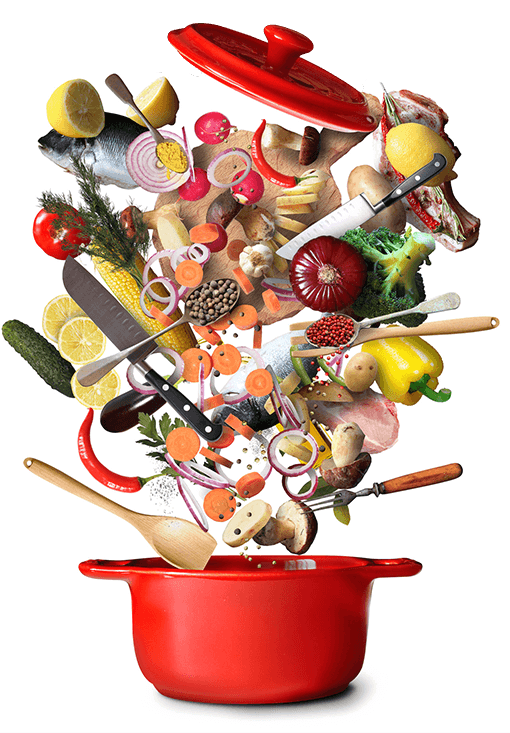Torrone – Italian Nougat Recipe (Soft and Chewy)

This soft and chewy Torrone is a classic Italian nougat made with honey, sugar, whipped egg whites, and toasted nuts—a perfect sweet treat for holidays and gifting!
While nougat, torrone, and even pavlova recipe (which you must try) are desserts often associated with Christmas time, I don’t see a reason not to make them for any other occasion.
Video Recipe 📹
Watch the full video recipe to learn how to make the best Torrone recipe. This step-by-step tutorial simplifies the process, offering tips and tricks to guarantee perfect results every time.
Prefer the written recipe? Scroll down to the recipe box 👇
Why You’ll Love Torrone 🤩
Torrone candy is the ultimate sweet confection that’s perfect for any occasion!
- 🍯 Classic Italian Nougat – Soft, chewy, and absolutely irresistible.
- 🎁 Perfect Edible Gift – A sweet treat beautifully packed for the holiday season.
- 💪 Packed with Nuts – Toasted whole almonds and pistachios add texture and flavor.
- 🕒 Lasts for Days – Store it in a dry place, and it’s ready for special occasions.
- 👨🍳 Fun to Make – Learn how to make torrone step-by-step with this traditional torrone recipe.
Ingredients for Homemade Torrone

- Honey: The star of the show, creating a smooth honey mixture.
- Sugar: Combines with honey to create the sugar syrup.
- Egg Whites: Whisked to stiff peaks for that fluffy texture.
- Vanilla Extract: Adds a subtle, sweet aroma.
- Lemon Zest/Orange Peel: Brightens up the flavors with a citrusy note.
- Whole Almonds & Pistachios: Toasted warm almonds give the torrone its crunch.
- Edible Wafer Paper: Prevents sticking and gives a clean look.
- Cooking Spray: To prep the pan for easy removal.
This is just a short review of the ingredients; for the complete recipe, including quantities, scroll down to the recipe card 👇
What is the Difference Between French Nougat and Italian Torrone?
French nougat (Nougat de Montélimar) is typically soft, airy, and uses honey, sugar, and whipped egg whites. It often includes a mix of nuts like almonds and pistachios, along with candied fruits.
Italian torrone can be either soft (morbido) or hard, depending on the cooking temperature of the sugar syrup. It focuses more on honey and toasted almonds or pistachios, often with a denser, chewier texture.
How to Make Torrone
Here are the key steps to mastering this nougat recipe:
1. Toast the Nuts 🌰 – Toast the whole almonds and pistachios until warm and golden.

2. Make the Meringue 🥚 – add a pinch of salt and whip egg whites to soft peaks.

3. Cook the Syrup 🍯 – Heat the sugar mixture with honey to the correct temperature (290F/145C) using a candy thermometer.

4. Combine Syrup and Meringue 🎛️ – Slowly pour the syrup in a thin stream while mixing at high speed until achieving stiff peaks, then whip for 6-8 minutes until the mixture is glossy, thick.

5. Add Flavors and Nuts 🥄 – Stir in vanilla, zest, and nuts, then spread evenly in a prepared pan.

The Key to Best Nougat: Honey Syrup 🍯

The honey mixture and sugar syrup are the heart of this recipe. Keep these tips in mind:
- Use a Candy Thermometer: Monitor the temperature closely. The syrup should reach hard ball stage (around 295°F/145°C).
- Too Low? – Your torrone will remain too soft and sticky.
- Too High? – It will become too hard and crumbly.
- Avoid Common Problems: Stir the syrup consistently and pour in a thin stream to prevent deflation.
Soft Nougat vs. Hard Nougat 🤔
- Soft Torrone (Torrone Morbido): Cook the syrup to lower temperatures (around 290°F/145°C). This results in a soft nougat texture that’s chewy.
- Hard Nougat: cook the syrup to a higher temperature, typically 295°F to 310°F (146°C to 155°C), which is known as the hard crack stage. This results in a firmer, brittle texture that snaps when broken, perfect for traditional hard nougat.
Tips to Make the Best Torrone

- Monitor Temperatures: Keep an eye on the sugar syrup to avoid mistakes.
- Work Quickly: Once mixed, spread the torrone fast before it firms up.
- Grease Tools: Lightly grease your wooden spoon and spatula for smoother spreading.
- Clean Tools: Ensure your stand mixer and bowl are spotless—fat ruins meringue.
- Use Wafer Paper: I didn’t use it in my recipe, but I highly recommend wafer paper to line the torrone. It prevents sticking and makes slicing much easier!
How to Store

Store your homemade torrone in a cool, dry place, wrapped in parchment and place it in an airtight container to protect it from humidity and direct sunlight. Properly stored, it will last up to 2 weeks, making it ideal for gifting during the holidays or special occasions. For longer storage, you can freeze torrone for up to 1 month. To make thawing easier, chop it into portions first and thaw only what you need. Note that freezing may slightly alter its texture.
Common Questions
You can test the syrup’s stage by dropping a small amount into cold water. For soft nougat, it should form a firm but pliable ball. For hard nougat, it should harden and crack.
The syrup may not have reached the correct temperature. Use a candy thermometer or the water test to ensure accuracy.
Yes, but the nougat might stick to the pan or your hands. Line the pan with greased parchment paper to help with removal.
More Dessert Recipes

Torrone – Italian Nougat recipe (Soft and Chewy)
Ingredients
- Cooking spray
- 1 cup (340 g) Honey
- 1¼ cups (250 g) Sugar
- 1½ cups (220 g) Almonds
- 1½ cups (180 g) Pistachios
- 2 Egg whites large
- Pinch Salt
- 2 teaspoons Vanilla extract
- Orange/lemon zest
Instructions
- Line an 8-inch (20cm) pan with parchment paper. Grease with non-stick cooking spray and set aside. Note: Traditionally, wafer paper is lined at the bottom and top to prevent sticking.
- Toast the nuts: Preheat oven to 350F (180C).
- Spread nuts on a baking sheet and toast them for about 8-10 minutes or until golden. Turn the oven off and leave the nuts there so they remain warm. *read notes
- Make the meringue: In a bowl of a stand mixer, fitted with a whisk attachment, beat egg whites and salt until soft peaks form. When you achieve soft peaks, turn the mixer off and move to the syrup. *read notes
- Make the syrup: In a medium-large saucepan, combine sugar and honey. Cook and keep stirring the sugar mixture while heating, and use a candy thermometer to check the temperature. Once it reaches 280°F (138°C), stop stirring. At this point, the honey won't boil over, so let it continue to boil on its own.
- Combine Syrup and Egg Whites: Keep an eye on the thermometer, and when it reaches 295°F (145°C), take the saucepan off the heat and then, slowly pour the syrup in a thin stream into the whipped egg whites, while mixing on low speed. Avoid pouring it directly onto the whisk to prevent splashing. Increase the mixer speed to high and whip for 6-8 minutes until the mixture is glossy, thick, and starts to pull away from the sides of the bowl.
- Remove the bowl from the mixer and stir in the almonds, pistachios, orange/lemon zest and vanilla. Work quickly to scoop and spread the torrone into the prepared pan, using lightly greased spatula, press this evenly into the pan and let it cool completely (3 hours) before slicing.
- Once ready to serve, release the torrone from the pan and slice it into bars or squares.
Video
Notes
- Use Wafer Paper: I didn’t use it in my recipe, but I highly recommend wafer paper to line the torrone. It prevents sticking and makes slicing much easier!
- Warm Nuts: if the nuts are cold, they might reduce the meringue temperature and make the mixing and spreading process much harder, so make sure your nuts are warm.
- Clean bowl: Make sure your bowl is very clean and grease-free, otherwise you might have issues with making the meringue, remember, fat is the enemy of meringue.
- FAQs: Make sure you read the FAQs for this recipe which are located above the recipe box for additional tips and troubleshooting! For extra tips and variations read the article.
- Watch the Video: For a better understanding of the recipe, I always recommend watching the video recipe, which includes a step-by-step guide to help you succeed.








